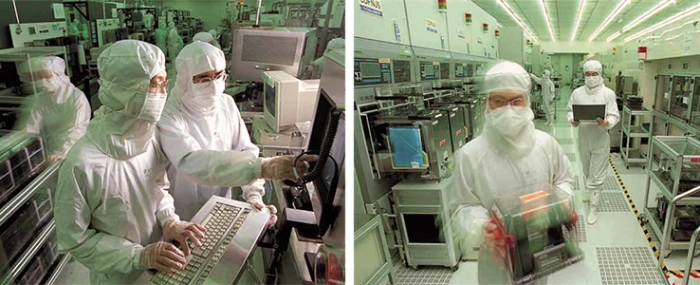
The foundry industry is showing signs of stabilisation
The foundry industry is showing signs of stabilisation, marked by a 10% QoQ growth, indicative of ongoing inventory normalisation, says Counterpoint Research.
Demand for strong AI remained robust in Q4 2023, setting the stage for continued expansion into 2024.
According to Counterpoint Research's Foundry Services, the global foundry industry's revenue increased by around 10% QoQ but fell 3.5% YoY in Q4 2023. Despite ongoing macroeconomic uncertainty, the industry began to bottom out in the second half of 2023, led by supply chain inventory restocking demand in the smartphone and PC sectors. Rush orders were seen from both PC and smartphone applications, especially in the Android smartphone supply chain.

Unsurprisingly, TSMC continued to lead the foundry industry in Q4 2023, with a 61% market share. The company reported higher-than-expected revenues in Q4 2023, a notable increase from the 59% growth in Q3.
TSMC's 5nm capacity utilisation rate reached full capacity, thanks to strong demand for AI GPUs from Nvidia. Meanwhile, Apple's iPhone 15 continues to fuel growth at the leading-edge 3nm node. These two catalysts contributed to revenue from nodes below 7nm, which accounted for approximately 70% of TSMC's total revenue in the quarter, demonstrating the company's technological competitiveness.
“AI demand is expected to remain strong in 2024, with increased capacity from TSMC CoWoS coming online. Simultaneously, the foundry market is very close to the bottom of the semiconductor inventory cycle. TSMC will be the major beneficiary of both the AI mega trend and the logic semiconductor demand recovery,” says Counterpoint Analyst Adam Chang in a press release.
With a 14% market share, Samsung Foundry remained in second place in Q4 2023 as smartphone restocking continued during the quarter. As Counterpoint puts it, the surge in initial pre-orders for the Samsung S24 series bodes well for revenue contribution from Samsung’s 5/4nm.
Among mature node foundries, both GlobalFoundries and UMC delivered better-than-expected results, each holding a 6% market share in Q4 2023. However, both companies provided weak Q1 2024 guidance, largely reflecting poor demand and customer inventory adjustments, especially in automotive and industrial applications.
SMIC had a 5% market share in Q4 2023, with 7/10/14nm capacity utilisation rates running high to fulfil Huawei Kirin chips and China’s local CPU/GPU demand. SMIC anticipates an increase in rush orders for specific smartphone-related components, including TDDI and CIS, in the near term, but has adopted a cautious full-year outlook due to uncertainties in demand sustainability – echoing the conservative outlook of other mature node foundries.
Following a sharp downturn in 2023, the foundry industry is forecast to return to a growth trajectory in 2024 as inventory continues to normalise. Counterpoint states that strong demand for AI and a mild recovery in end demand will serve as the main growth drivers for the industry in 2024.

